Plantar fasciitis is a common foot condition, causing heel pain and discomfort. It occurs when the plantar fascia, the thick band of tissue that runs across the bottom of your foot, becomes inflamed.
- What are Shoe Inserts?
- Definition and Purpose
- Types of Inserts
- Choosing the Right Inserts for Plantar Fasciitis
- Features to Look For
- Material Considerations
- Benefits of Using Shoe Inserts for Plantar Fasciitis
- Pain Relief
- Improved Foot Function
- How to Use Shoe Inserts Effectively
- Correct Placement and Adjustment
- When to Replace Inserts
- Buying Guide
- Top Brands and Products
- Where to Buy
- FAQs About Plantar Fasciitis Shoe Inserts
What are Shoe Inserts?
Shoe inserts, also known as insoles or orthotics, are removable devices placed inside shoes to provide additional support, comfort, and cushioning. They serve several purposes:
- Support: Inserts can enhance the support provided by shoes, especially in the arch and heel areas. This is particularly beneficial for people with foot conditions like flat feet or high arches.
- Alignment and Balance: By improving the alignment of the foot and ankle, inserts can help distribute weight more evenly across the foot. This can alleviate pain and discomfort in the feet, legs, and back.
- Comfort and Cushioning: Inserts often add extra cushioning to shoes, which can reduce the impact on the feet during activities like walking, running, or standing for long periods.
- Pain Relief: They are often used to alleviate pain associated with various foot conditions, including plantar fasciitis, heel spurs, and metatarsalgia.
- Customization: While many shoe inserts are available over the counter, custom orthotics can be made specifically for an individual’s feet, providing tailored support and comfort.
- Corrective Purposes: Some inserts are designed to correct foot abnormalities, improve foot function, and aid in the rehabilitation of foot injuries.
- Prevention: Regular use of appropriately chosen inserts can prevent the development or worsening of foot-related problems.

Choosing the Right Inserts for Plantar Fasciitis
Features to Look For
Choosing the right shoe inserts for plantar fasciitis is crucial to ensure effective pain relief and proper foot support. When selecting inserts specifically for this condition, here are some key features to look for:
- Arch Support: Good arch support is essential. Inserts should provide a firm yet comfortable support to the arch area, helping to distribute pressure more evenly and reduce strain on the plantar fascia.
- Heel Cushioning and Support: Look for inserts with substantial cushioning in the heel area. This cushioning helps absorb impact and relieve pressure on the heel, where plantar fasciitis pain is often most intense. A deep heel cup can also help stabilize the heel and foot.
- Material: The material of the insert plays a significant role in comfort and effectiveness. Memory foam, EVA foam, gel, or a combination of these can provide both cushioning and support. The material should be durable yet flexible.
- Thickness and Density: The thickness and density should be sufficient to provide support and cushioning without making the shoe feel too tight. It’s a balance between comfort and functionality.
- Contoured Design: A contoured design that mimics the natural shape of the foot can be more effective. This design helps in aligning the foot to a more natural position.
- Shock Absorption: Inserts that offer good shock absorption can reduce the impact on the feet during walking or running, which is beneficial in managing plantar fasciitis symptoms.
- Removable and Transferable: Ideally, the inserts should be removable so you can transfer them between different pairs of shoes.
- Breathability: Materials that allow for air circulation can help keep the feet dry and prevent issues related to moisture like blisters or athlete’s foot.
- Size and Fit: Ensure the inserts fit properly in your shoes. They should cover the entire footbed and not slide around inside the shoe.
- Customizable Options: Some over-the-counter inserts offer a degree of customization, such as trimmable fronts or adjustable arch support, which can be beneficial for a more personalized fit.
Material Considerations
- Foam Inserts: Foam is popular for its cushioning properties. It provides a soft, padded feel, which can be very comfortable. Memory foam, in particular, molds to the shape of the foot, offering personalized support and relief. However, foam might compress over time, reducing its effectiveness.
- Gel Inserts: Gel inserts are known for their shock-absorbing qualities. They provide a firm yet comfortable cushion, which can be particularly beneficial for alleviating heel pain associated with plantar fasciitis. Gel inserts typically maintain their shape and support longer than foam.
- EVA (Ethylene Vinyl Acetate): EVA is a lightweight, foam-like material. It offers a good balance between cushioning and support. EVA inserts are durable and resistant to stress-cracks, making them a long-lasting option.
- Plastic or Polymer Inserts: These materials are often used in rigid or semi-rigid orthotics. They provide a high level of support and are especially useful for correcting foot alignment. However, they can be less comfortable than softer materials and may require a period of adjustment.
- Leather Inserts: Leather provides a natural, breathable option. When combined with a cushioning base, such as foam, it offers comfort and a sleek design. Leather is also durable, but might not provide as much cushioning or support as other materials.
- Cork Inserts: Cork is another natural material that molds to the shape of the foot over time, offering a custom fit. It offers moderate support and cushioning, along with natural breathability.
- Composite Materials: Many inserts combine different materials to maximize benefits. For example, an insert might have a foam layer for cushioning, a gel heel pad for shock absorption, and a plastic arch support for stability.
Benefits of Using Shoe Inserts for Plantar Fasciitis
- Pain Relief: One of the primary benefits of using shoe inserts is the reduction of pain associated with plantar fasciitis. By providing proper support to the arch and cushioning the heel, inserts help alleviate the stress on the plantar fascia, thus reducing pain and discomfort.
- Improved Support: Inserts specifically designed for plantar fasciitis often include enhanced arch support. This support helps to distribute weight more evenly across the foot, reducing the strain on the plantar fascia.
- Better Foot Alignment: Properly designed inserts can aid in correcting foot alignment. This correction can reduce the strain on the plantar fascia and other parts of the foot, which can be beneficial not just for plantar fasciitis but also for overall foot health.
- Increased Comfort During Activities: With the additional cushioning and support provided by inserts, individuals with plantar fasciitis can experience increased comfort during various activities, such as walking, running, or standing for extended periods.
- Prevention of Further Injury: Regular use of shoe inserts can help prevent the worsening of plantar fasciitis symptoms. By maintaining proper foot alignment and reducing strain on the foot, the risk of aggravating the condition is minimized.
- Versatility and Convenience: Shoe inserts can be used in various types of footwear, making them a versatile solution. They can be easily transferred from one pair of shoes to another, providing consistent support regardless of the shoe style.
- Cost-Effective Treatment Option: Compared to other treatment methods such as custom orthotics or surgery, shoe inserts are a relatively inexpensive way to manage plantar fasciitis.
- Enhanced Daily Functioning: By reducing pain and discomfort, inserts can improve an individual’s overall quality of life, making daily activities more manageable and less painful.
- Complement to Other Treatments: Shoe inserts can be used in conjunction with other treatment methods, such as physical therapy, stretching exercises, and icing, to provide a comprehensive approach to managing plantar fasciitis.

How to Use Shoe Inserts Effectively
- Choose the Right Fit: Make sure the inserts fit your shoes properly. They should lie flat and cover the entire sole of the shoe. If necessary, trim the inserts according to the guidelines provided, typically found along the edges.
- Gradual Introduction: When you first start using new inserts, it’s important to give your feet time to adjust. Start by wearing them for a few hours a day and gradually increase the duration as your feet become accustomed to the new support.
- Wear Them Consistently: For the best results, use the inserts consistently in your shoes. Switching back and forth between shoes with and without proper support can delay your progress in managing plantar fasciitis.
- Proper Placement: Ensure the inserts are correctly placed inside your shoes. The heel of the insert should fit snugly in the heel cup of the shoe, and the arch support should align with the natural arch of your foot.
- Check for Wear and Tear: Regularly inspect your inserts for signs of wear and tear. Over time, the material can compress and lose its effectiveness, particularly in the areas where you need support the most.
- Use in Suitable Footwear: Inserts work best in shoes that have enough room to accommodate them without being too tight. Avoid using inserts in shoes that are already very cushioned or supportive, as this can lead to over-correction and discomfort.
- Combine with Proper Footwear: While inserts provide additional support, they can’t compensate for ill-fitting or unsupportive shoes. Make sure you’re using them in conjunction with good quality, supportive footwear.
- Listen to Your Body: Pay attention to how your feet and body feel while using the inserts. Some initial discomfort is normal, but persistent pain or discomfort may indicate that the inserts aren’t the right fit for you.
- Consult with a Professional: If you have persistent foot pain or specific foot conditions, consult with a podiatrist or foot specialist. They can provide guidance on the best type of insert for your needs and may recommend custom orthotics if necessary.
- Maintain Good Foot Hygiene: Keep both your shoes and inserts clean to prevent odor and bacterial growth. Many inserts can be removed and aired out or cleaned as per the manufacturer’s instructions.
Buying Guide
When it comes to finding top brands and products for arch support, there are several reputable options available, including Atlas Arch Support. Here are some of the best brands and products for arch support:
Atlas Arch Support:
- Atlas Arch Support offers a range of products designed to provide excellent arch support, including insoles and orthotic inserts. Their products are known for their comfort and durability, making them a popular choice among those seeking relief from arch pain.
Buying Guide
Buying Atlas Arch Support or any arch support products requires careful consideration to ensure that you get the right fit and support for your specific needs. Here’s a buying guide to help you make an informed decision:
- Determine Your Arch Type:
- Understanding your arch type is crucial in selecting the right arch support. You can have a high arch, normal arch, or flat arch. You may want to consult with a podiatrist or use a footprint test to determine your arch type.
- Assess Your Footwear:
- Consider the types of shoes you’ll be wearing with the Atlas Arch Support or any other arch support product. Some arch supports are designed for specific shoe types, such as athletic shoes, dress shoes, or sandals.
- Size and Fit:
- Ensure that you choose the correct size for your feet. Most arch support products come in various sizes, and it’s essential to follow the manufacturer’s sizing guidelines. A proper fit is essential for effective arch support and comfort.
- Understand Your Foot Condition:
- If you have specific foot conditions or issues such as plantar fasciitis, overpronation, or supination, make sure the arch support you choose addresses those concerns. Atlas Arch Support and other reputable brands often provide options for different foot conditions.
- Material and Cushioning:
- Pay attention to the materials used in the arch support. Look for products made from high-quality materials that provide adequate cushioning and support. Memory foam, gel, and EVA foam are common materials used in arch supports.
- Durability:
- Check the durability of the product. You’ll want arch supports that can withstand daily use without breaking down quickly. Look for products with reinforced arch support structures.
- Customizable Options:
- Some arch support products, including Atlas Arch Support, offer customizable features. These may include adjustable arch heights or the ability to trim the insole to fit your shoe size perfectly.
- Comfort and Pain Relief:
- Your primary goal in purchasing arch supports is comfort and pain relief. Read reviews and user feedback to see if the product effectively alleviates arch pain and discomfort for others with similar foot conditions.
- Return and Exchange Policy:
- Check the manufacturer’s return and exchange policy before purchasing. This is especially important if you’re unsure about the fit or effectiveness of the product. Ensure that you can return or exchange the arch supports if they don’t meet your expectations.
- Price:
- Arch support products come in a range of price points. While it’s essential to stay within your budget, prioritize quality and effectiveness over the lowest price. Investing in high-quality arch support can provide long-term benefits for your foot health.
- Consult a Professional:
- If you have severe foot issues or are unsure about which arch support product to choose, consider consulting a podiatrist or orthopedic specialist. They can provide personalized recommendations based on your specific needs.

Superfeet:
- Superfeet is a well-known brand that specializes in premium insoles and orthotics. Their products are designed to provide superior arch support and improve overall foot comfort. The Superfeet Green insole is one of their most popular options.
Buying Guide
- Determine Your Foot Type:
- Understanding your foot type is crucial when selecting Superfeet insoles. You can have a high arch, normal arch, or flat arch. Knowing your foot type will help you choose the appropriate Superfeet product that offers the right level of arch support.
- Identify Your Foot Condition:
- Consider any specific foot conditions or issues you may have, such as plantar fasciitis, overpronation, or supination. Superfeet offers different insoles designed to address various foot problems, so choose one that suits your condition.
- Choose the Correct Size:
- Superfeet insoles come in different sizes, so be sure to measure your feet and refer to the manufacturer’s sizing chart to find the right size. A proper fit is crucial for effective support and comfort.
- Select the Appropriate Model:
- Superfeet offers a range of insole models, each with specific features. Some are designed for athletic shoes, while others are suitable for dress shoes or work boots. Choose a model that matches the type of footwear you plan to use the insoles with.
- Material and Cushioning:
- Consider the materials and cushioning used in the Superfeet insoles. Different models may incorporate various materials like foam, gel, or cork. Assess your comfort preferences and select the insoles that offer the cushioning you desire.
- Arch Support Level:
- Superfeet offers different levels of arch support, including low, medium, and high. Choose the arch support level that matches your foot type and comfort needs. High arches typically require more support, while flat arches may need extra cushioning.
- Activity and Use:
- Think about your intended activities while wearing Superfeet insoles. If you’re an athlete, look for models designed for sports and high-impact activities. For everyday use, consider insoles that provide all-day comfort and support.
- Read Reviews and User Feedback:
- Research customer reviews and user feedback to learn about the experiences of others who have used Superfeet insoles. Their insights can help you gauge the effectiveness and comfort of the product for your specific needs.
- Price and Budget:
- Superfeet insoles come in various price ranges, so consider your budget. While it’s essential to stay within your budget, keep in mind that investing in high-quality insoles can provide long-term benefits for your foot health and comfort.
- Return and Exchange Policy:
- Check the manufacturer’s return and exchange policy before making a purchase. This is important in case the insoles don’t fit properly or meet your expectations. Ensure that you can return or exchange them if needed.
- Consult a Professional:
- If you have severe foot problems or are unsure about which Superfeet insoles to choose, consider consulting a podiatrist or orthopedic specialist. They can provide personalized recommendations based on your specific foot condition.

Dr. Scholl’s:
- Dr. Scholl’s is a trusted brand that offers a variety of arch support products, including custom-fit orthotics, gel insoles, and shoe inserts. Their products are widely available and cater to different arch support needs.
Buying Guide
- Identify Your Foot Issue:
- Determine your specific foot problem or discomfort, such as arch pain, plantar fasciitis, or general foot fatigue. Knowing your condition will help you select the appropriate Dr. Scholl’s product that addresses your needs.
- Understand Your Foot Type:
- Know your foot type, which could be high arches, normal arches, or flat feet. Different Dr. Scholl’s products are designed to cater to various arch types, so choose accordingly.
- Select the Right Model:
- Dr. Scholl’s offers a variety of products, including custom-fit orthotics, gel insoles, and shoe inserts. Depending on your footwear type (e.g., athletic shoes, dress shoes, or work boots), choose a model that suits your shoe style and activity level.
- Determine Your Size:
- Measure your feet and refer to the manufacturer’s sizing chart to find the correct size for your chosen Dr. Scholl’s product. Proper sizing is crucial for comfort and support.
- Arch Support Level:
- Dr. Scholl’s provides different levels of arch support, such as low, medium, and high. Pick the level that corresponds to your arch type and the level of support you require.
- Material and Cushioning:
- Consider the materials and cushioning used in Dr. Scholl’s products. Some feature memory foam, gel, or other specialized materials for added comfort. Choose the one that aligns with your preferences.
- Activity and Usage:
- Think about your intended activities while wearing Dr. Scholl’s products. For sports or high-impact activities, opt for insoles designed for such purposes. For everyday use, look for all-day comfort and support.
- Read Reviews and User Feedback:
- Research customer reviews and user feedback to gain insights into the experiences of others who have used Dr. Scholl’s products. Reviews can help you assess the effectiveness and comfort of the product for your specific needs.
- Price and Budget:
- Dr. Scholl’s products come in a range of price points. While staying within your budget is important, remember that investing in high-quality insoles can contribute to your long-term foot health and comfort.
- Return and Exchange Policy:
- Review the manufacturer’s return and exchange policy before purchasing. This is essential in case the product doesn’t fit properly or meet your expectations. Ensure that you can return or exchange the product if necessary.
- Consult a Professional:
- If you have severe foot issues or are uncertain about which Dr. Scholl’s product to choose, consider consulting a podiatrist or orthopedic specialist. They can provide personalized recommendations based on your specific foot condition.
Powerstep:- Powerstep is known for its medical-grade orthotic insoles and supports. They offer a range of options, from full-length insoles to heel cups, all designed to alleviate arch pain and provide comfort during daily activities.
Buying Guide
- Determine Your Foot Type:
- Identify your foot type, whether you have high arches, normal arches, or flat feet. Different Powerstep insoles offer varying levels of arch support, so choose the one that matches your foot type and comfort requirements.
- Identify Your Foot Condition:
- Consider any specific foot conditions or issues you may have, such as plantar fasciitis, overpronation, or supination. Powerstep offers different insoles designed to address various foot problems, so select one that suits your condition.
- Choose the Correct Size:
- Measure your feet and refer to the manufacturer’s sizing chart to determine the right size for your chosen Powerstep product. A proper fit is essential for effective support and comfort.
- Select the Appropriate Model:
- Powerstep offers a range of insole models, each with specific features. Some are designed for athletic shoes, while others are suitable for dress shoes or work boots. Choose a model that matches the type of footwear you intend to use the insoles with.
- Material and Cushioning:
- Consider the materials and cushioning used in Powerstep insoles. Different models may incorporate materials like foam, gel, or EVA foam for added comfort. Assess your comfort preferences and select the insoles that offer the cushioning you desire.
- Arch Support Level:
- Powerstep provides insoles with varying levels of arch support, including low, medium, and high. Pick the arch support level that corresponds to your foot type and the level of support you require.
- Activity and Use:
- Think about your intended activities while wearing Powerstep insoles. If you’re an athlete or engage in high-impact activities, look for models designed for such purposes. For everyday use, seek insoles that provide all-day comfort and support.
- Read Reviews and User Feedback:
- Research customer reviews and user feedback to understand the experiences of others who have used Powerstep insoles. Reviews can help you assess the effectiveness and comfort of the product for your specific needs.
- Price and Budget:
- Powerstep insoles come in various price ranges. While it’s essential to stay within your budget, remember that investing in high-quality insoles can contribute to your long-term foot health and comfort.
- Return and Exchange Policy:
- Review the manufacturer’s return and exchange policy before making a purchase. This is important in case the insoles don’t fit properly or meet your expectations. Ensure that you can return or exchange them if needed.
- Consult a Professional:
- If you have severe foot issues or are uncertain about which Powerstep insoles to choose, consider consulting a podiatrist or orthopedic specialist. They can provide personalized recommendations based on your specific foot condition.
- Vionic:
- Vionic offers stylish and supportive footwear that incorporates biomechanical technology to provide arch support. Their shoes and sandals are known for their fashionable designs and supportive features.
Buying Guide
- Determine Your Foot Type:
- Identify your foot type, whether you have high arches, normal arches, or flat feet. Vionic offers various shoe styles with built-in arch support, so choose ones that suit your foot type and comfort preferences.
- Consider Your Foot Condition:
- If you have specific foot issues like plantar fasciitis, overpronation, or supination, look for Vionic shoes with features tailored to address those concerns. Vionic offers options designed to provide relief for various foot conditions.
- Select the Right Shoe Style:
- Vionic offers a wide range of shoe styles, including sandals, sneakers, boots, and dress shoes. Choose a style that matches your lifestyle and intended use. For example, select sandals for warm-weather comfort or sneakers for active pursuits.
- Determine Your Size:
- Make sure to choose the correct size by referring to Vionic’s sizing chart. Proper fit is crucial for both comfort and the effectiveness of the arch support.
- Review the Arch Support Level:
- Vionic shoes are known for their built-in orthotic arch support. Some models offer moderate arch support, while others provide high-level support. Consider your arch type and the level of support you need when selecting a shoe style.
- Material and Cushioning:
- Pay attention to the materials used in the shoes. Vionic shoes often feature cushioned footbeds, EVA midsoles, and other supportive elements. Assess the cushioning and materials to ensure they meet your comfort requirements.
- Activity and Use:
- Think about the activities you’ll engage in while wearing Vionic shoes. Some models are designed for casual wear, while others are suitable for active use. Choose the shoes that align with your daily activities and lifestyle.
- Read Reviews and User Feedback:
- Research customer reviews and user feedback to learn about the experiences of others who have worn Vionic shoes. Reviews can help you gauge the effectiveness, comfort, and style of the shoes for your specific needs.
- Price and Budget:
- Vionic shoes come in a range of price points. While staying within your budget is important, remember that investing in quality footwear can contribute to your long-term foot health and comfort.
- Return and Exchange Policy:
- Check the manufacturer’s return and exchange policy before making a purchase. This is essential in case the shoes don’t fit properly or meet your expectations. Ensure that you can return or exchange them if needed.
- Consult a Professional:
- If you have severe foot issues or are unsure about which Vionic shoes to choose, consider consulting a podiatrist or orthopedic specialist. They can provide personalized recommendations based on your specific foot condition.
WHERE TO BUY
FAQs About Plantar Fasciitis Shoe Inserts
Plantar fasciitis shoe inserts can be a helpful solution for individuals dealing with foot pain and discomfort. Here are some common questions and answers related to these inserts:
1. What is plantar fasciitis? Plantar fasciitis is a common foot condition characterized by inflammation of the plantar fascia, a thick band of tissue that runs along the bottom of the foot. It often causes heel pain and discomfort, especially during the first steps in the morning.
2. How can shoe inserts help with plantar fasciitis? Shoe inserts, also known as orthotics or insoles, can provide extra arch support, cushioning, and alignment for your feet. They can help distribute pressure more evenly, reduce strain on the plantar fascia, and alleviate pain associated with plantar fasciitis.
3. Are all shoe inserts the same for plantar fasciitis? No, there are various types of shoe inserts designed to address different needs. Some are specifically tailored for plantar fasciitis, offering enhanced arch support and heel cushioning. Custom orthotic inserts, over-the-counter options, and gel inserts are among the choices available.
4. How do I choose the right shoe inserts for plantar fasciitis? To select the right shoe inserts, consider factors such as arch type (high, medium, or low), level of cushioning, and your individual foot shape and size. It’s often a good idea to consult with a podiatrist or orthopedic specialist for personalized recommendations.
5. Can I use over-the-counter shoe inserts for plantar fasciitis? Yes, many over-the-counter shoe inserts are designed specifically for plantar fasciitis. These can be a cost-effective and convenient option, but they may not provide the same level of customization and support as custom-made orthotics.
6. How do I know if I need custom orthotic inserts? Custom orthotic inserts are typically recommended for individuals with severe or persistent plantar fasciitis, as well as those with specific foot deformities or gait abnormalities. A podiatrist can assess your needs and prescribe custom orthotics if necessary.
7. Do I need to replace my shoe inserts regularly? Yes, shoe inserts can wear out over time and lose their effectiveness. It’s advisable to replace them every 6-12 months, depending on usage and the quality of the inserts. Inspect them regularly for signs of wear and tear.
8. Can shoe inserts completely cure plantar fasciitis? While shoe inserts can provide significant relief from plantar fasciitis symptoms, they may not be a complete cure. Combining inserts with other treatments like stretching exercises, physical therapy, and proper footwear can lead to better outcomes.
9. Do I need to wear specific shoes with my inserts? It’s recommended to wear shoes that have removable insoles when using shoe inserts. This allows you to replace the original insoles with your plantar fasciitis inserts for proper fit and support.
10. Can I wash my shoe inserts? Most shoe inserts can be cleaned with mild soap and water. However, check the manufacturer’s instructions for specific care recommendations, as some may be machine washable while others are not.
Remember that plantar fasciitis can vary in severity from person to person, and what works for one individual may not work for another. It’s essential to consult with a healthcare professional to determine the most suitable treatment plan for your specific condition.


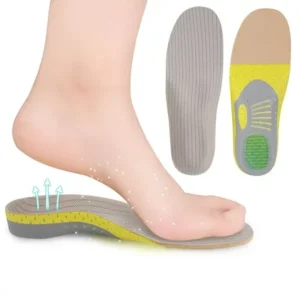
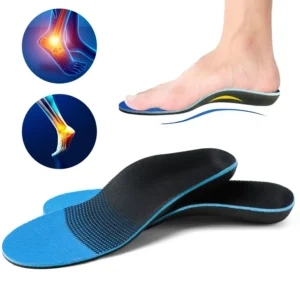
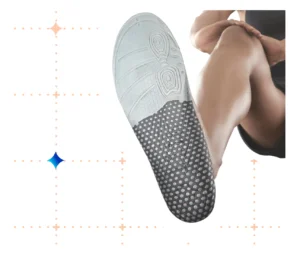
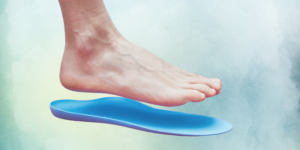



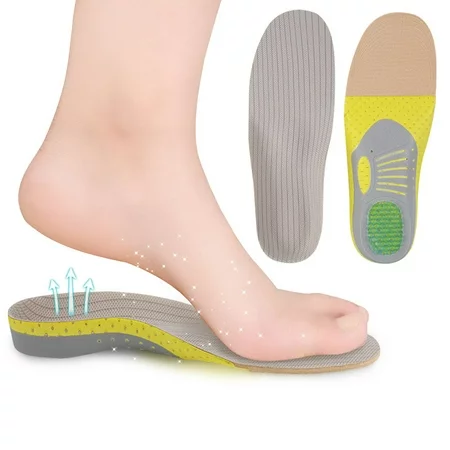
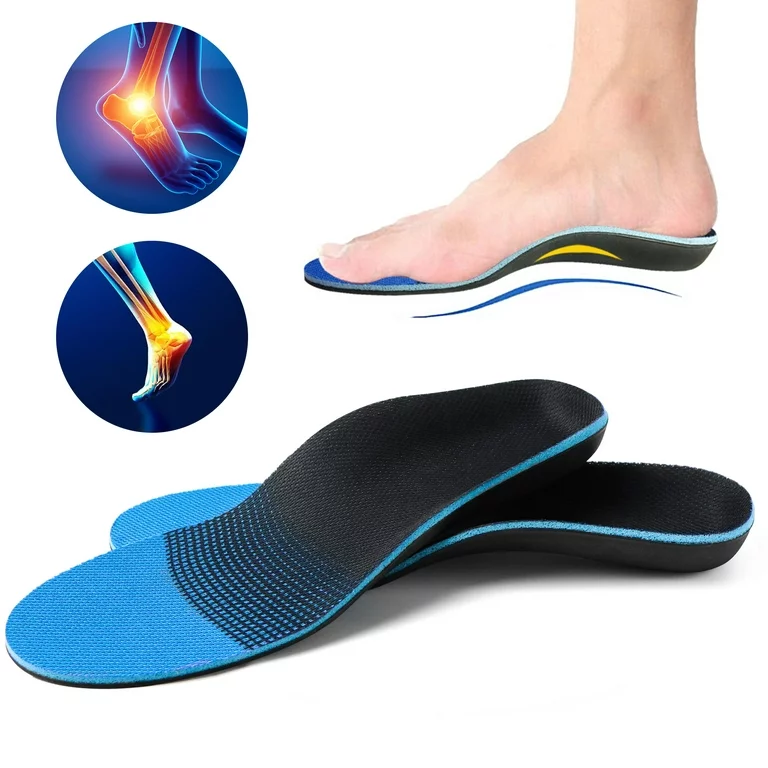
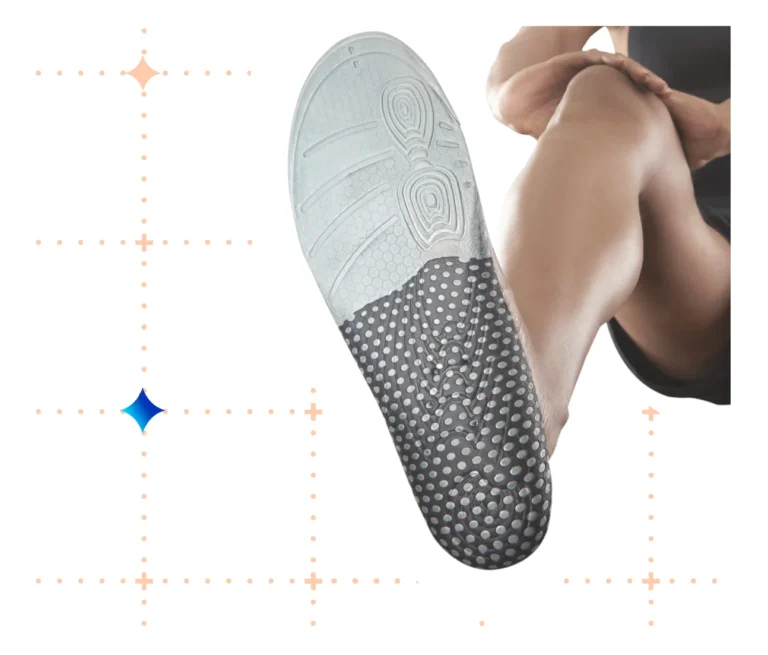
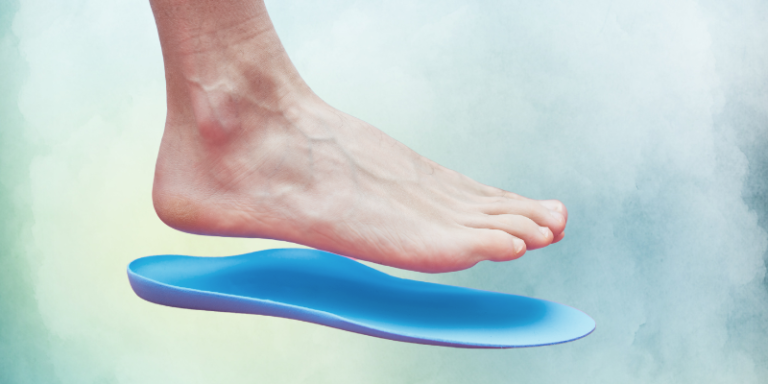


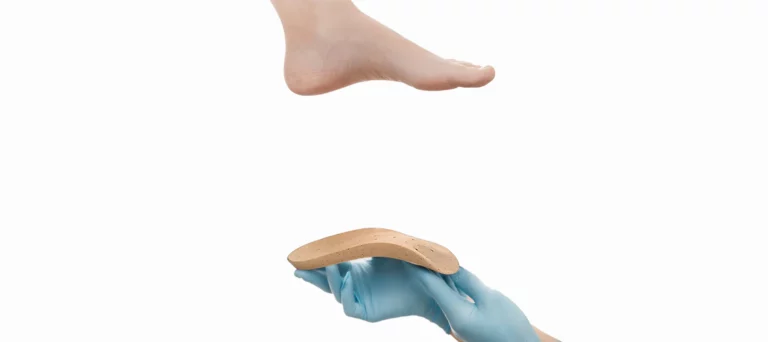
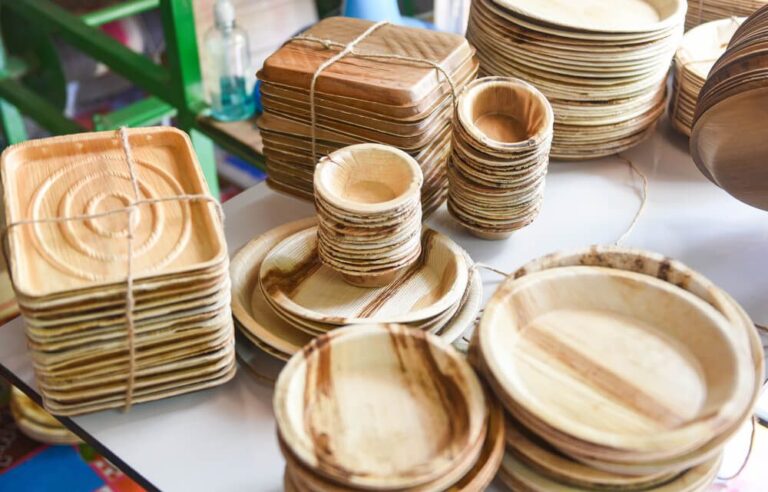
+ There are no comments
Add yours